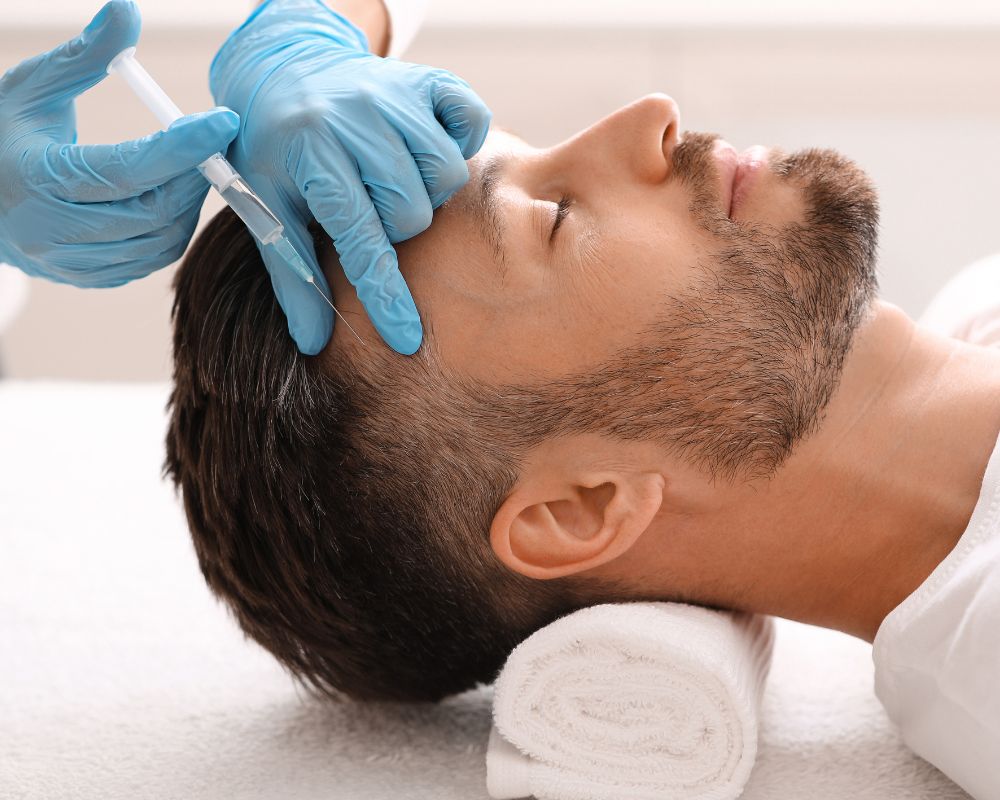
12 Aug Considering PRP for Hair Loss? Here Are Some Things to Know
Platelet-rich plasma (PRP) therapy is one of several regenerative medicine therapies doctors are now recommending as an alternative to more traditional treatments. We utilize it here at Lone Star Pain Medicine in a number of ways, including treating hair loss. The thing about hair loss is that so many things can cause it. The variations dictate that some treatments work for a given patient while others do not.
If you have been considering PRP for hair loss, we would be more than happy to consult with you. Lone Star doctors are intimately familiar with PRP and its appropriate applications. If it is the right treatment for you, we will walk you through the entire process, answer your questions, and address any concerns you might have.
In the meantime, there are some important things you should know about PRP for hair loss:
1. It is for Both Men and Women
First and foremost, we want you to know that PRP can be an effective hair loss treatment for both men and women. In terms of age, patients between 18 and 72 are good candidates. Nearly any adult with thinning hair could benefit from PRP injections conducted over the course of several months. The exact number of treatments you might need would depend on the extent of your hair loss and how well your scalp responds to the treatment.
2. It is Not Intended as a Treatment for Baldness
The ideal PRP candidate has thinning hair only. Unfortunately, the therapy is not very effective for complete baldness. PRP injections are designed to strengthen the follicles and encourage better hair growth. It is largely ineffective on follicles that are no longer producing hair.
In terms of thinning hair, a successful treatment would encourage better hair growth. A patient’s existing hair would thicken and appear more full. Follicles would be less likely to stop producing hair in the short term. But again, the effectiveness of the therapy is subject to a range of factors we can discuss when you visit Lone Star.
3. Underlying Conditions Can Interfere
Certain underlying conditions can interfere with the effectiveness of PRP. Thyroid disease is one of them. When you speak to a Lone Star doctor about PRP therapy, be sure to mention any underlying conditions you might have. In some cases, PRP will not be a viable choice. In other cases, PRP may still be effective, but only after the underlying condition has been properly addressed.
4. The Treatment is an Outpatient One
PRP injections are administered as an outpatient treatment right here in our Weatherford clinic. You would visit our office on the scheduled day and meet with your doctor. A standard blood draw would be conducted, with the blood then being processed in a centrifuge to concentrate platelets and growth factors. The resulting material would then be injected into the scalp at targeted sites.
The entire procedure takes no longer than a few hours, at most. Once the treatment is complete, you would be released and free to go about your normal activities. You might experience a bit of pain and discomfort in the hours immediately following the procedure. But as long as you are not terribly bothered by injections, your discomfort should be minimal.PRP therapy is one option for thinning hair. If you think you might be a good candidate, we encourage you to visit Lone Star Pain Medicine for a consultation. We can help you understand the benefits of PRP for hair loss. If it is right for you, we can get you going by scheduling your first treatment.


Sorry, the comment form is closed at this time.